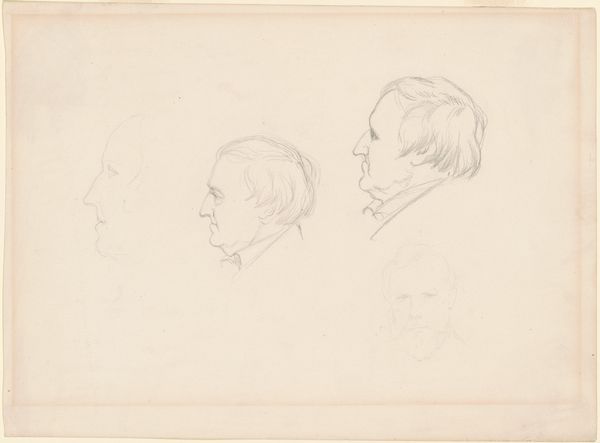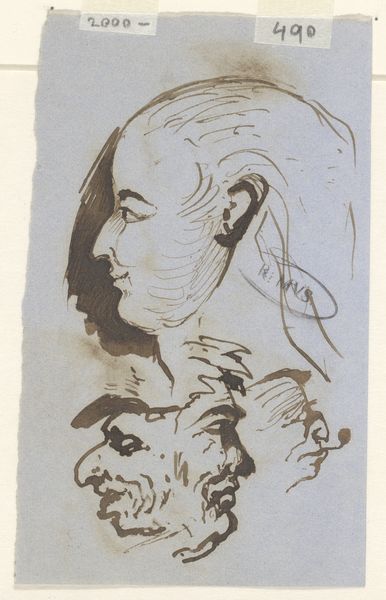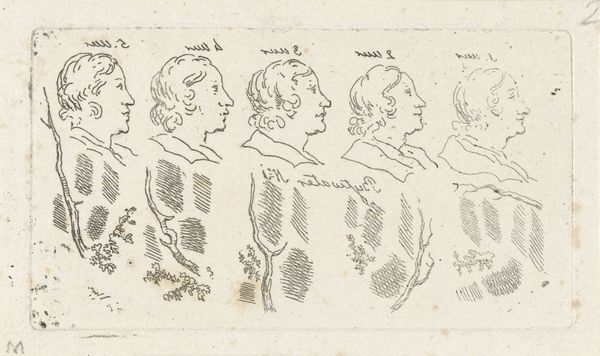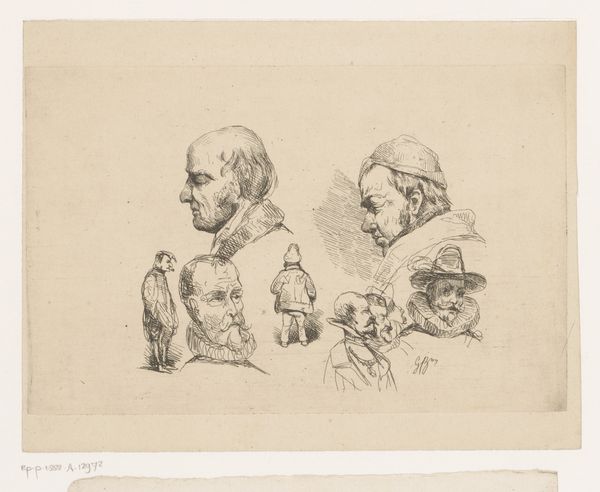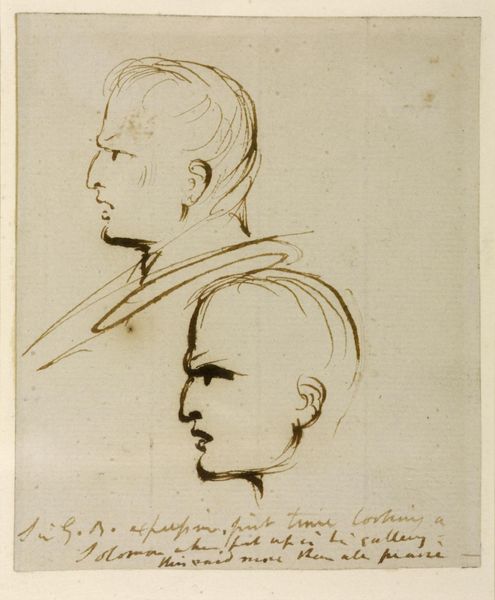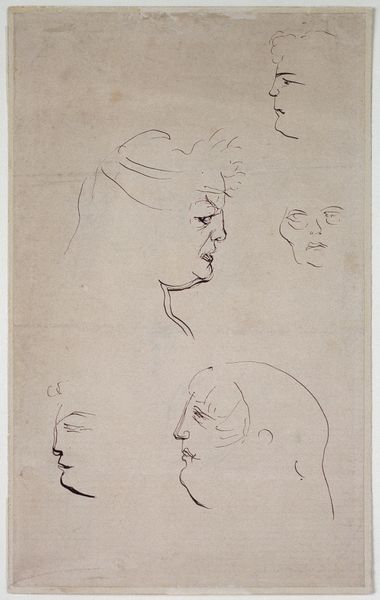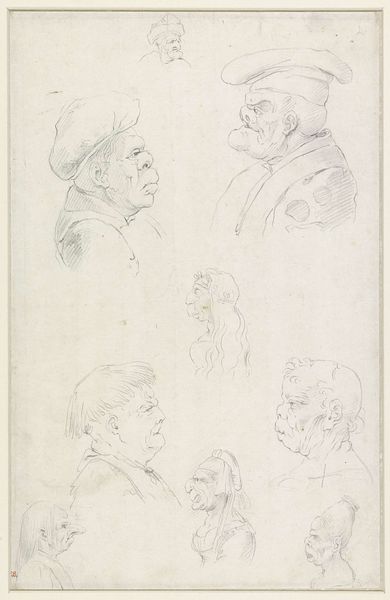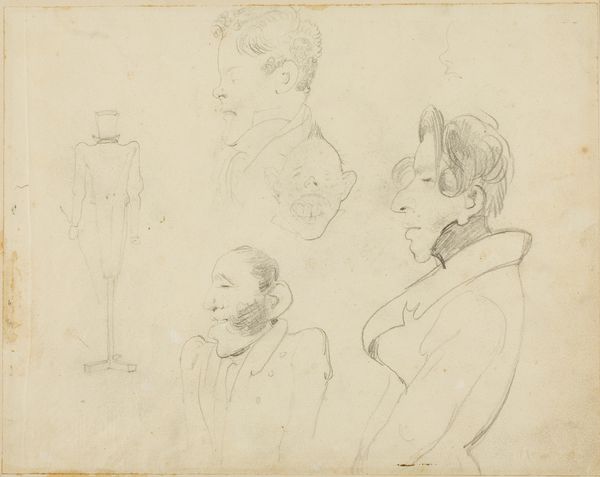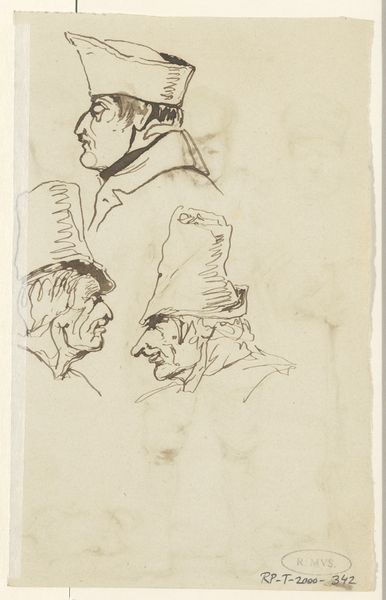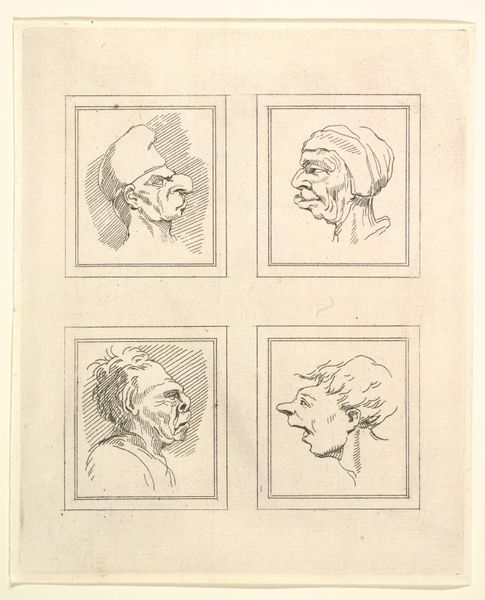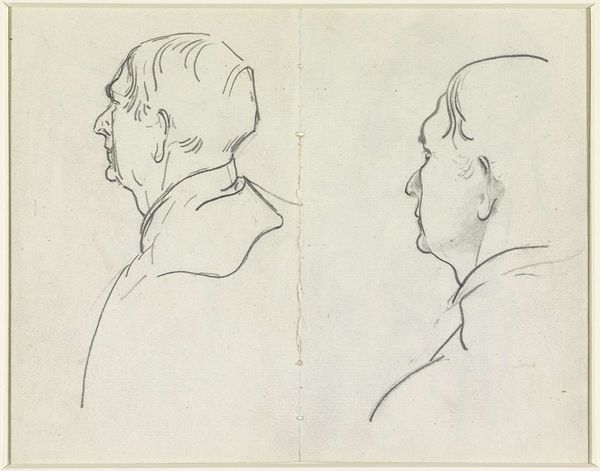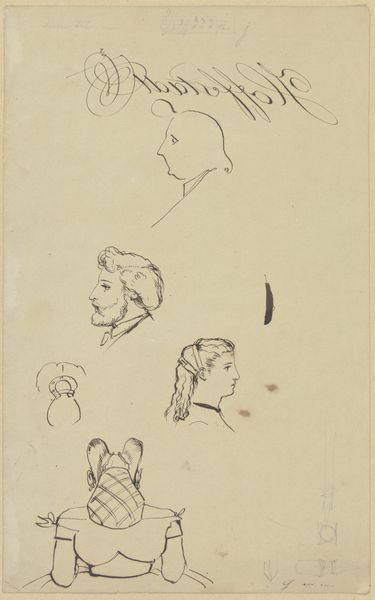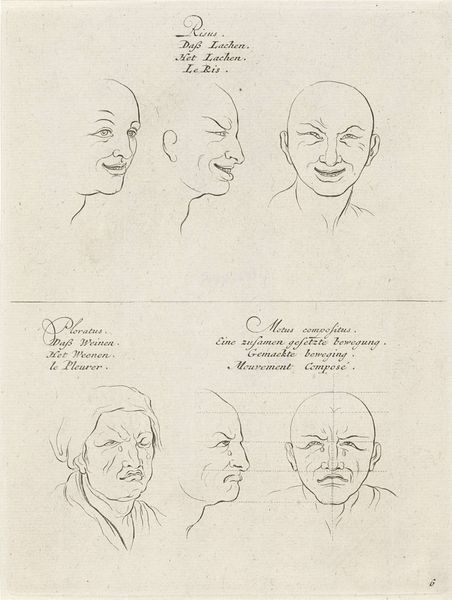
drawing, print, ink
#
portrait
#
drawing
# print
#
pencil sketch
#
ink
#
history-painting
#
academic-art
Dimensions: Sheet: 8 1/8 in. × 13 in. (20.7 × 33 cm)
Copyright: Public Domain
Curator: Here we have "Three Portraits in Profile," created between 1765 and 1800. It's a drawing made with ink, pencil, and potentially other printmaking materials. It's currently held here at the Metropolitan Museum of Art. Editor: My initial impression is one of restrained elegance. The delicacy of the line work lends a sense of fragility to the otherwise imposing figures. It feels very academic, in that precise yet somehow incomplete manner. Curator: Yes, I would agree. There's a clear commitment to capturing the contours of the subjects, yet it remains a sketch, suggesting a study rather than a finished piece. One might ask, what was the intended purpose? We know that the piece depicts Carl August Ehrensvärd. Were these portraits preparatory studies? Were they private or intended for broader distribution? Editor: Perhaps. But note the stark presentation. The neutrality of the background, coupled with the serial arrangement of the figures, removes any real sense of individual character. Instead, we're confronted with what seems to be a study in physiognomy. Are we meant to understand something deeper about these men through their profiles? The era certainly was invested in such ideas. Curator: A very astute observation. The period was rife with theories attempting to link physical appearance with character. Furthermore, this work sits at a fascinating nexus of artistic representation and social power. The very act of creating and displaying portraits was, of course, intertwined with social status. One could ask how access to portraiture, either as sitter or viewer, was governed by social hierarchies and political forces during the Enlightenment. Editor: The placement of letters underneath each figure further complicates any straightforward reading. F, Å, and P -- fragments detached from clear linguistic reference, thereby reinforcing that the meaning in the lines of each figure remains tantalizingly, beautifully, deferred. Curator: Indeed. They become graphic elements, perhaps referencing a catalog or a more extensive project now lost to time. I see in the clean delineation of forms the Enlightenment ideals that governed art at that moment. Thank you for this conversation. Editor: Thank you. It always proves enriching to re-engage with the structural components underlying this fascinating sketch.
Comments
No comments
Be the first to comment and join the conversation on the ultimate creative platform.

